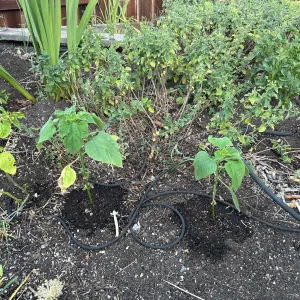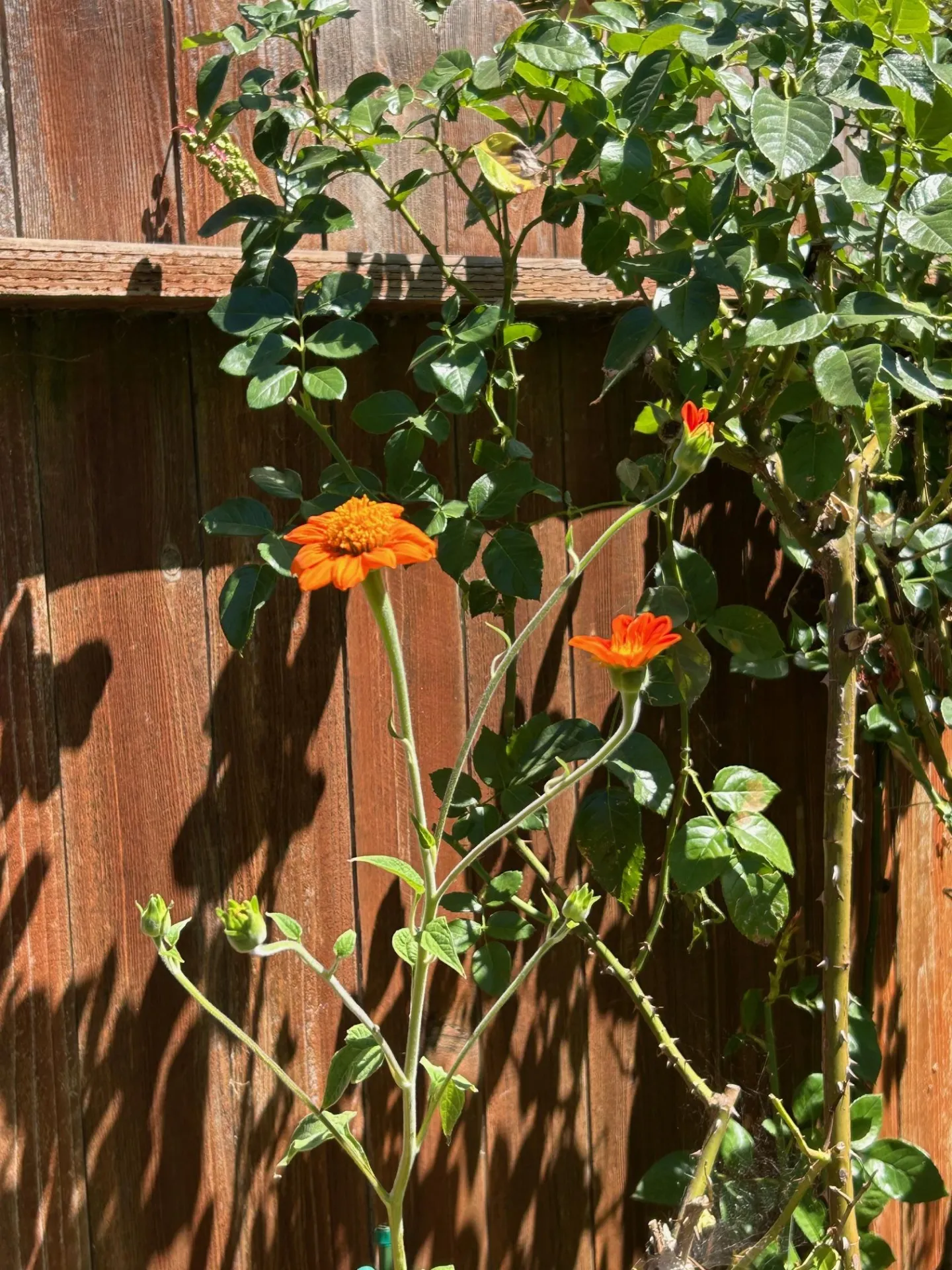Blog by Karen Metz
Each year, I try to grow at least one new plant. I had been wanting to try Tithonia rotundifolia, Mexican Sunflower, for quite a while. I have been impressed with the many beautiful insect and pollinator photographs on Kathy Keatley Garvey’s Bug Squad blog. Many of the shots showed insects enjoying the orangey, red blossoms of this plant. I knew her garden was in Vacaville, so I figured I could probably grow them here in Fairfield.
Not doing my homework first, the next time I was in a nursery, I asked if they had any of these plants to purchase. They patiently explained to me that these warm-season annuals are generally grown from seed. So, I came home with a seed packet and got them planted up on April 23, 2025.

Now I have not had a lot of luck growing things from seed planted in the ground. They do seem to sprout, then they seem to disappear, sometimes due to slugs or snails, sometimes to birds, and others perhaps to damping off disease. I decided to plant a lot of seeds in a large pot, figuring I would lose some of them along the way. I put a metal obelisk over the pot to hopefully give the pot some protection. The seeds had sprouted by May 7th.
They continued to grow well, so I ended up with seven healthy seedlings that definitely couldn’t live happily ever after in one pot. On June 24, I moved two to my raised vegetable bed, left two in the original pot, and put three seedlings into individual pots.
They tolerated this well and continued to grow. By July 30, my first bud opened. By August 4, I had several more open, and I saw my first pollinator visit. It was a Gulf Fritillary butterfly, Dione vanillae. A few days later, I saw a hummingbird stop by. These plants are also popular with bees, so I will continue to watch as the plants get larger. I am looking forward to seeing what unfolds.

This variety gets to be 4-5 feet tall, so with our winds, I may need to protect them with some stakes. They love full sun and regular water and can stand extreme heat. They bloom better when they are deadheaded, removing the spent blossoms. The stems are hollow and a little delicate. There is a wonderful overview on growing Mexican Sunflowers at hort.extension.wisc.edu/articles/mexican-sunflower-tithonia-rotundifolia/
I was thinking next year, I might grow Tithonia with regular sunflowers, Helianthus annuus. The orange color contrasting with the yellow would be striking. Although both these plants have the word sunflower in their common name, they are not in the same genus. They are both part of the same large family called Asteraceae, which has plants with daisy-like flowers.


